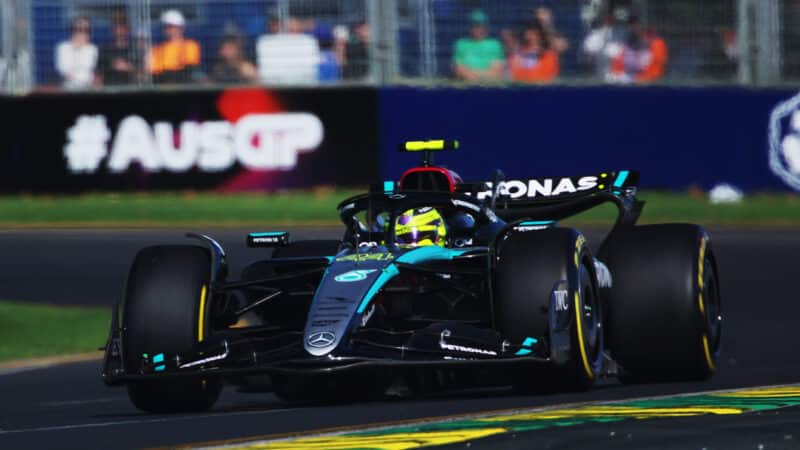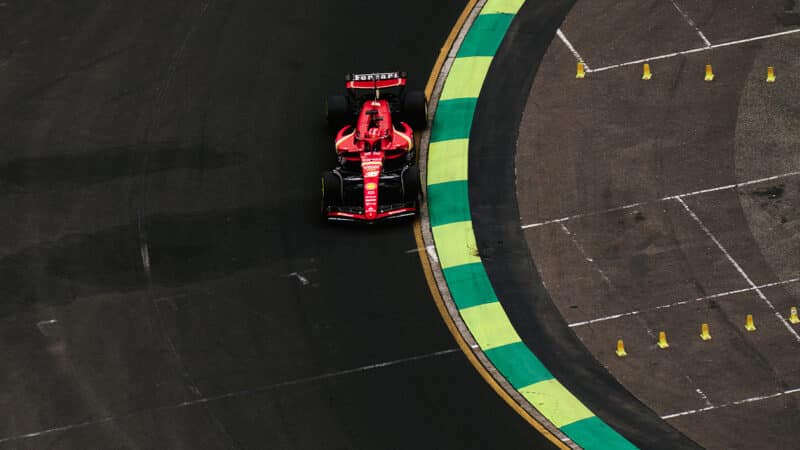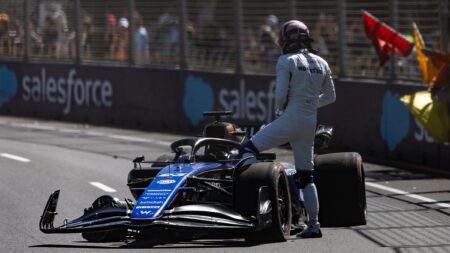“I’m not sure we can say the tyre management was the main focus of the development of this car. What is true is that last year the main issue was the fact that the car was very difficult to drive and then into the race if you have to do a step you are doing mistakes, damaging the tyres, and then it’s kind of a negative spiral. This year it’s much easier to read, to know where is the limit and to stay just a bit below. And when you have to do tyre management it’s much, much easier and they are much more under control than they were last year when they were a bit more in survival mode. Doing this, you are killing the tyres quite quickly.”
That said, even last year’s Ferrari looked pretty good when graining was the limitation. This was the case at Las Vegas where Leclerc only lost the opportunity of defeating Verstappen through the timing of a safety car. This car has retained the good front mechanical grip in slow corners, which is surely part of that trait. But it has added better aerodynamic balance in the faster corners.
In Suzuka next weekend it’s all going to be about rear thermal degradation, as in Bahrain. The Esses – fast, long and with no respite between each turn in the sequence – are the dominant factor. Performance through there largely determines tyre degradation. If you lack downforce the roughness of the asphalt will usually ensure you’ll be damaging the rears. As soon as they are too hot, they lose the performance forever, lap by lap, regardless of how much tread they have left. Suzuka is one of those tracks where the tyre can be completely useless despite still having most of its tread. It’s all about how the car can control those temperatures. As such, we might expect Red Bull to return to the fore. It will be a stern test for Ferrari – and should therefore give us a yet-more refined read on the competitive state of play between the two main contenders in the year ahead.
Mercedes’ woes continue
Mercedes was as uncompetitive in Australia as it had been in Jeddah. But for different reasons. In Saudi, it was all about how much time was lost in a particular sequence of fast corners to aerodynamic bouncing. In Melbourne the time loss was in the slow corners. But only in certain conditions, as tech director James Allison conceded after seeing the car be very competitive in FP3 and nowhere in qualifying: “We are starting to see a pattern with the car,” he said. “We have a period in the weekend where we’re feeling good about the car but then in the paying sessions in qualifying and race it slips through our fingers. The strongest correlation we can make at the moment is that when the day is warm and therefore the tyre temperature is coming up with the track temperature, that’s when the competitiveness drops. The times we’ve been good have all been in the sessions which are the coolest. That gives us some clues about what we need to do moving forwards.

Slow corners hampered Mercedes at Albert Park
LAT via Mercedes
“We need to move the temperature range and the temperature balance front to rear more in our favour. But if you conclude that having exhausted the degrees of freedom that you have available to you in set-up terms that you still need to go further, then it gets harder because that will be underlying characteristics in, say, the aerodynamic map or suspension characteristics that is aggravating a particular feature. [The fix] can be either quick and dirty or a little more involved and complicated.”
Suzuka next weekend will likely be when we find which it is.




